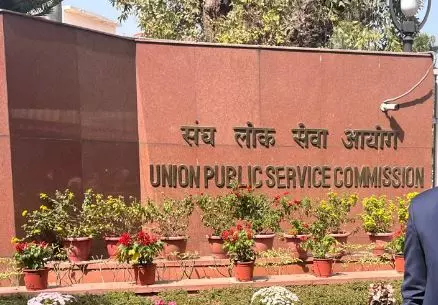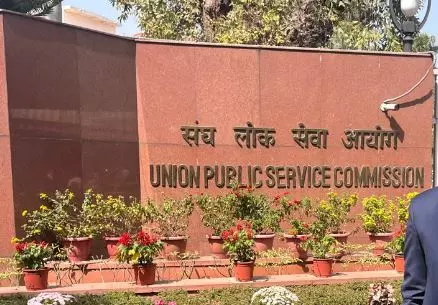
The recent, hastily terminated attempt to induct 45 specialists as senior and mid-level civil servants on contract and the earlier agricultural reform legislation, hastily enacted without much debate in 2020 and then withdrawn a year later, both point to three generic, weak spots in the government’s reform strategy.
First, scoring a quick win for the reforms report card overrode the need to ensure social equity. Second, hasty formulation, without deep buy-in from key stakeholders — respectively, the Union Public Service Commission (UPSC), mandated by Article 320 of the Constitution to manage Union government recruitment, and farmers in the case of agriculture — gummed up implementation. Third, shrinking opportunities for the bureaucracy, across ministries, to influence decision-making, dried up ground-up feedback.
Both proposals had merits. Enhancing skills within bureaucracy rather than hiring expensive, short-term consultants, to do the bureaucracy’s core tasks and unleashing market forces in agriculture to enhance woefully low productivity, are worthy objectives.
Ironically, the case for lateral entry in civil services was decided way back in 1952 when the All-India Services were formalised. The Indian Administrative Service, Indian Police Service and the Indian Forest Service and the Union government “Group A” Central services like Tax, Railways and the Indian Foreign Service all induct bright youngsters, train them to be leaders and inject them into the wider base of civil servants in each state government and Union ministries, at a high level, generally eight service years ahead of other junior cadres, who resent the UPSC inductees as “lateral” entrants.
Today, “lateral entry” refers to recruitment outside the existing government cadres. A mechanism devised for highly specialised positions, which can’t be filled by deputation from any existing cadre but derided by pro-reservation activists for side-tracking the constitutional provisions for job reservations. Consider the case of the 500 officers strong Indian Economic Service (IES), a specialised Union government cadre since 1967. But the topmost position of the chief economic adviser has never been occupied by anyone from it. Instead, it is always filled laterally. It helped that the credentials of those selected were impeccable. Dr Manmohan Singh being one such, who went on to become Prime Minister of India — a feat no other civil servant has ever equalled. This mechanism was also used to induct technocrats, like R.V. Sahi, ex-CEO of BSES, as secretary, power, in 2002, during the Atal Behari Vajpayee government. His private sector expertise was expected to be the key to unlocking power sector reforms.
Till now, administrative smarts dictated limiting “lateral entry” to a few unique positions filled one at a time. This lulled the ire of pro-reservation activists at undermining of the constitutional provisions (Article 16) for equal opportunity in employment (job reservations for SC/ST/OBC). The main difference between previous successful lateral appointments and the recent aborted attempt is in using it for bulk lateral hiring. This exposed the Narendra Modi administration to the potential threat of a snowballing, pro- and anti-job reservation agitation, on the scale unleashed by Prime Minister V.P. Singh’s June 1990 decision to extend reservations to Other Backward Castes.
Bulk lateral entry is an efficient way to quickly replace burgeoning, expensive, short-term, private consultants with in-house expertise. Not applying the reservation principle to such appointments does more harm than good, because it vilifies what could in fact be the way government appointments are done in future. The existing cadre system of human resources management is rife with non-meritocratic elitism.
Most junior cadres (Group C and B services) have limited opportunities for career progress. Conversely, in the Group A cadres, “zombie” positions (not justified by workload) exist, created to safeguard “time-bound” promotions for entire batches.
Also consider that for the all-India services and the Central services, job reservations end at induction, even though Article 16 (14A) of the Constitution does not bar reservations in promotions. One of the consequences of social and economic backwardness is that candidates join the government at a higher age after repeated attempts at cracking the UPSC exam. Such officers also retire earlier, potentially thinning diversity (SC, ST, OBC representation) at the top. It is clear that the need for specialised lateral entry arises primarily from the inadequacies of a generalized cadre like the IAS and the Provincial Civil Services which respectively dominate the Union and state civil services.
Radical and direct HR reform would modify the existing cradle to grave employment policy. Instead, continuous, open market competition with reservation quotas for all eligible positions could be the norm. Upward career progression would be by competing for higher level positions rather than today’s non-transparent, administered promotion policies. A root and branch overhaul could redefine staff functions and allocation in line with future skills requirements and the opportunities for digitisation of government procedures. The opportunities for working in the government would transform from being a “make or break” beginning of career choice to a lifelong opportunity depending on meeting the skill requirements for each position.
This would also end the pervasive tuition services industry built around the UPSC examination, trapping many youngsters into desperately trying for a government job before they hit the age limit.
The “Agniveer” scheme has started mass contractualisation of government employment at the jawan level in the armed forces. The target is 0.15 million appointments of jawans by 2026. About 43,000 candidates are selected annually (mostly in the Army) for four years of service. One-fourth will be permanently absorbed into the defence forces. The rest will exit with a package of Rs 1.2 million each, skill development diplomas and re-employment in the Central paramilitary forces or in the private sector. For the government, this mechanism keeps the field forces young whilst remaining asset light.
The political objections to changes in the appointments policy arise from the apprehension that the ruling party is building a cadre of government servants personally loyal to it. To the extent that discretion prevails in recruitment, this is an ever-present risk, not restricted only to the present government. The answer is deep institutionalisation of the recruitment process to end discretionary appointments.
Close oversight by Parliament over appointments, relying on the performance audits reports of the Comptroller and Auditor General (India’s supreme audit body) is one safeguard. Elevating the UPSC from being just an advisory body to assuming direct responsibility for government appointments could be another.
The top civil service (IAS) is only harming itself by resisting new practices for efficient human resources management, marrying competitiveness with social justice. It can either lead the change, end elitism and enhance efficiency, or decline into obscurity.
